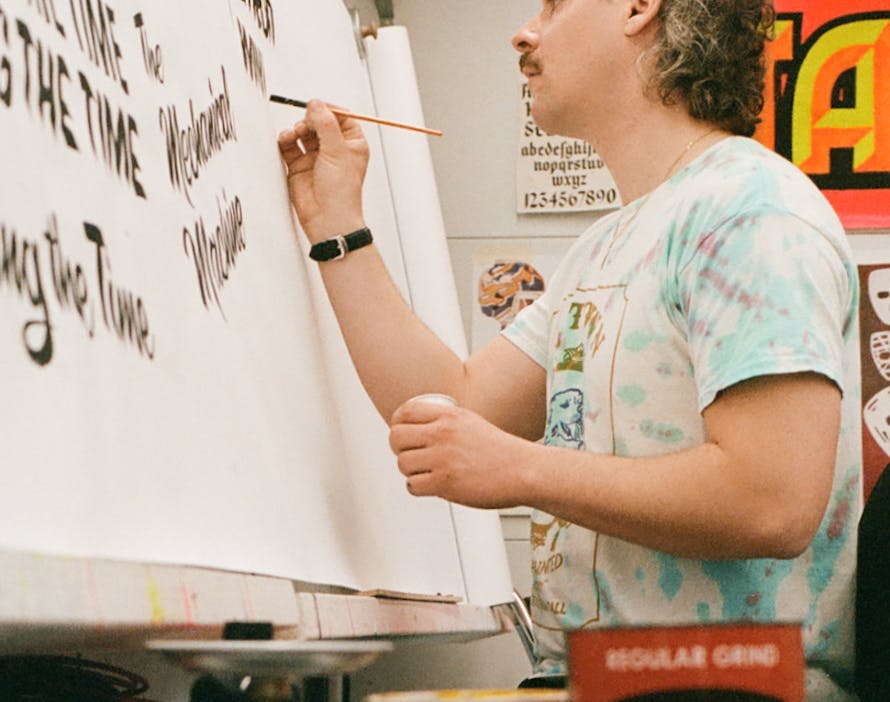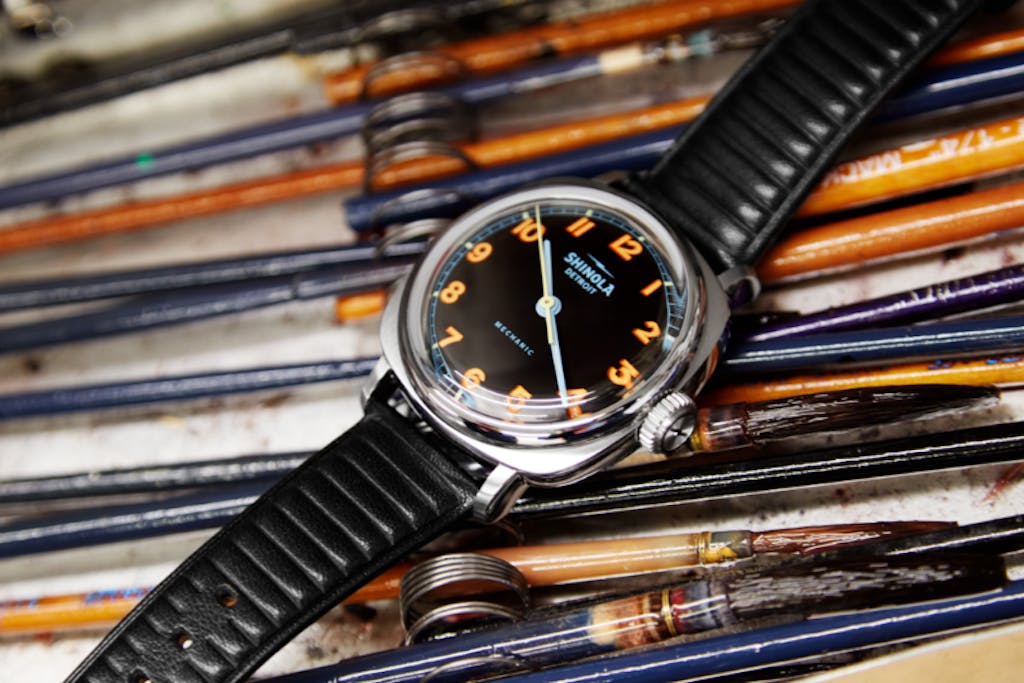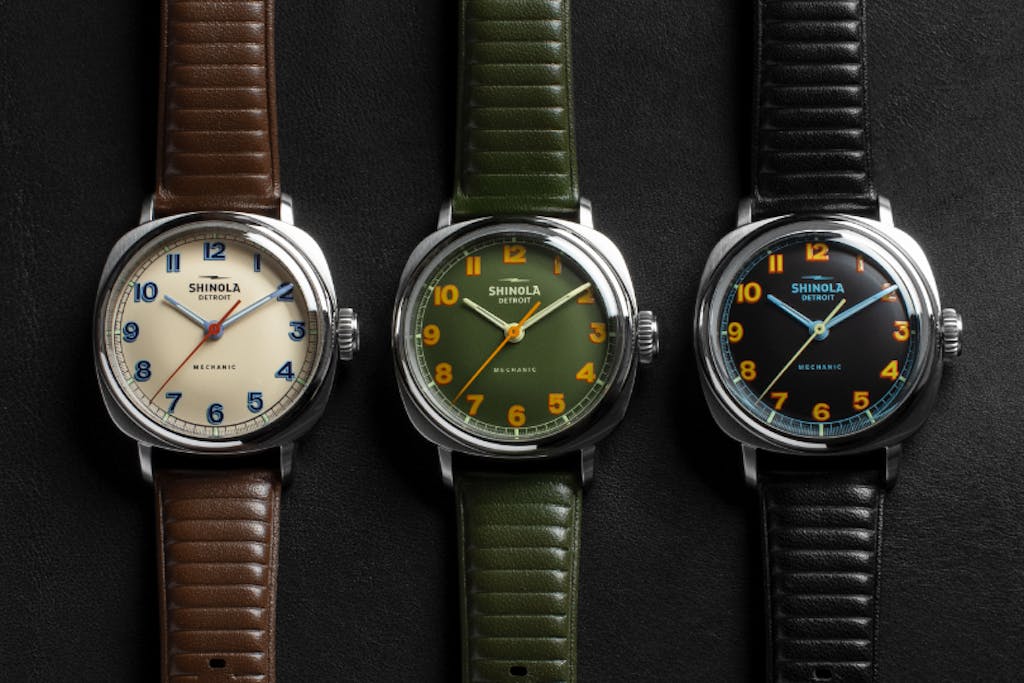Before the dawn of the digital printing age, there were the sign mechanics.
EVERY STROKE COUNTS
For hundreds of years, commercial signs were never printed—only hand painted by a skilled few with a true grasp of their trade. In this time long before our digital age, when the whole world was their canvas, these sign makers were known as mechanics.
Contrasting colors. Eye-catching layouts. Designs made for distance. From the spacing to the values, every stroke had to be in its proper place, conveying information with clarity, precision, and style.
Not unlike a well-crafted watch. Hence the name of Shinola’s tribute to all things analog, and the brand’s first hand-wound mechanical timepiece: The Mechanic.
From the design to the engineering, the Shinola Mechanic is a timepiece that pays tribute to the special tactile relationship between mechanical watch and wearer. The cushion-shaped case is meant to conjure old-school cool. It features box crystal, curved hands, and a domed dial with painted numerals that evoke the longstanding tradition of the hand-painted works crafted by these sign mechanics.
And to fully bring the concept to life with authenticity and a crafted touch, Shinola turned to a real-life mechanic: Hazel Park’s very own Jordan Zielke, owner of Motown Sign Co.

Zielke graduated from the University of Michigan in 2009 with a Bachelor’s of Fine Art. In 2012, he moved to Los Angeles, California, where he studied traditional sign painting under master sign painter Ralph “Doc” Guthrie at Los Angeles Trade Tech College. Zielke recalls many lessons big and small from Doc, both on signs and on life—but the biggest is this: Layout is king.
“Size, value and contrast, weight, and placement are the four key foundations to consider when designing a sign. But if the sign isn’t designed properly, it’ll never work. It’s the layout that takes time to fully understand, practice, and begin to apply it to your work.”
It’s for this reason that the term mechanic resonates with Zielke. “You have to have many ‘tools’ in your toolbox to get from inception to finished product. And while I do use modern tools in my process—Adobe Photoshop, Canon large format printer, e-mails—the finished product is always rendered by hand.”

SIGNS OF A RENAISSANCE
When Zielke first returned to Detroit from L.A., “There wasn’t much of a sign painting scene at all.” So he reached out to two of the established journeymen in his area: Dave Klein of Klein Signs, and Ron of Ron Signs. “They’re like father figures to me. Their support and encouragement helped with the confidence that it could be done. I connect with both of them to talk about life and making a living off your own hustles and the magic of sign making.”
Other legendary artisans in the community like Mark Casey, Jeff Young of Articulate Signs, Wild Bill, and airbrusher Layback Lenny had been maintaining the legacy of fine sign making in and around Detroit for many, many years and all played a part in laying the foundation for Zielke to thrive.
Over time, Zielke has watched the local sign scene grow with pride. “Detroit ten years ago was just starting to see new businesses arrive, and with that comes new demand for signs.” Zielke still remembers applying gold leaf signs at the brand new Shinola Hotel.
“There is a great community making sign painting visible and available to the community. The more it’s out there for people to see and business owners to make use of, the better it is for all of us. I feel like the standard is set fairly high in our area and everybody comes to the table with their best stuff, which keeps us all sharp.”

HANDS ON
Whether he’s creating something in the studio he built behind his house or on the road painting on-site, Zielke cherishes the freedom and connection he has to his craft. “My tool kit is very near and dear to me, and it affords me the ability to make my living and provide for my family. I might never be a millionaire, but I’m really enjoying my life and the work I’m able to create.”
It’s a reminder of how the daily rituals of analogue craftsmanship link us to the world we inhabit. Putting brush to paper bonds a sign with its maker the way winding a crown connects a mechanical watch to its wearer. With every steady, tactile move of the hand, a worthy tradition is preserved. Long may it shine.